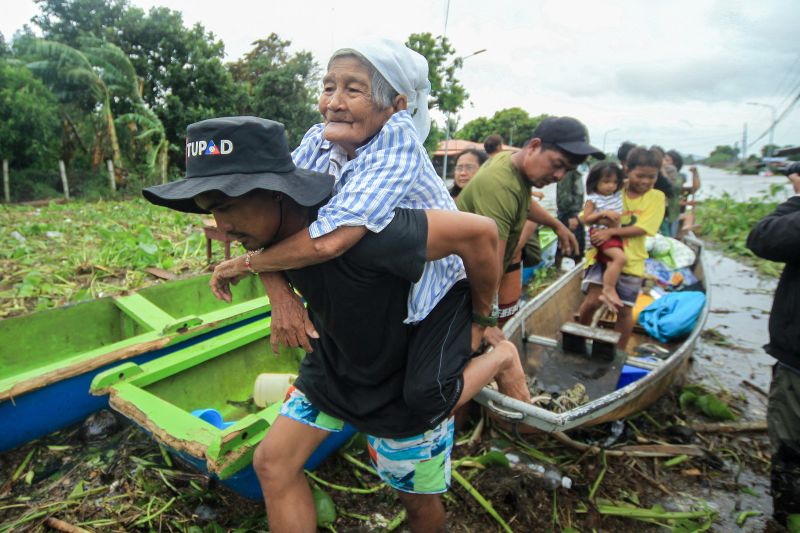Tropical Storm Trami, locally known as Tropical Storm Karding, devastated the Philippines in the middle of 2021, triggering catastrophic flooding and deadly landslides, leaving no less than two dozen people dead and many more affected. The power of the storm was such that it created a path of destruction across northern Luzon region, revealing the vulnerability of the archipelago to extreme weather conditions.
Tropical Storm Trami first made its presence felt when it entered the Philippine Area of Responsibility (PAR) on August 16, moving at a speed of up to 22 kilometers per hour. The torrential rain transformed urban roads into virtual rivers, submerging vehicles, and even first-floor properties. Some areas experienced more than a month’s worth of rainfall in just a couple of days.
However, more disturbing was the storm’s capacity to instigate landslides, displaying the destructive power of nature’s wrath. The combination of soft soil, loosened by the heavy rains, and steep mountainous and hilly terrain created a perfect scenario for these natural disasters. It was not just the volume of rainwater but also the intense speed that set off the deadly debris flows. In the town of Itogon, Benguet, a landslide buried dozens of miners in a small-scale gold mine, explaining the sadly high death toll of the disaster.
Notably affected in the onslaught of Tropical Storm Trami were the provinces of Metro Manila, Rizal, Bulacan, Pampanga, Zambales, Bataan, Cavite, Batangas, Laguna, and Quezon. Just within Metro Manila, about 115,000 people were directly affected, demonstrating the far-reaching impact of the storm. Furthermore, thousands of residents were forced to evacuate and temporarily live in shelters due to fears of more landslides and flooding as the storm continued to release its fury.
The agricultural sector was not spared from Trami’s rage either. With a significant portion of the population dependent on farming for livelihood, damages to hundreds of hectares of agricultural land posed a considerable economic setback. Crops including rice, corn, and high-value crops were damaged, amounting to millions worth of losses.
The Philippine government, alongside several non-profit organizations, immediately leaped into action with relief initiatives. The Philippine National Police, local government units, Coast Guard, Navy, and Army were all mobilized for rescue and relief operations. Meanwhile, international aid agencies like the Red Cross extended help to the victims, providing food parcels, clean drinking water, and other emergency supplies.
Despite the carnage caused by Tropical Storm Trami, the implementation of disaster risk reduction strategies and measures were evident. A warning system was in place well before the storm hit, with forced evacuations in vulnerable areas, potentially saving countless lives. The country’s history of frequent natural calamities and measures taken post-Haiyan Typhoon in 2013, including improvements in forecasting capacity and preparedness planning, mitigated the storm’s impact to an extent.
Nonetheless, the damaging and deadly effects of Tropical Storm Trami served as a grim reminder of the Philippines’ vulnerability to natural disasters, contingent on its geographical location and topographical characteristics. They also underscore the sigh-inducing reality of global climate change, suggesting an increase in the intensity of weather-related disasters, and subsequently, a sterner test for the resilience of the Filipino people in the years to come.




